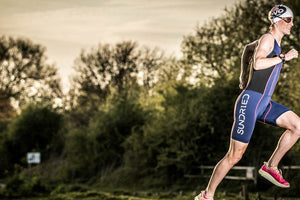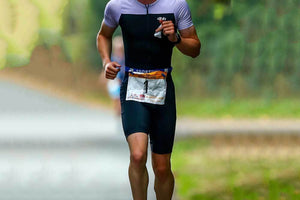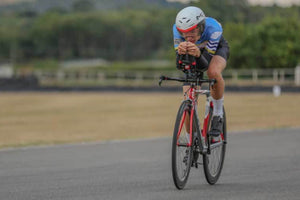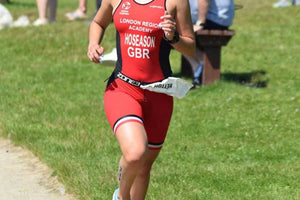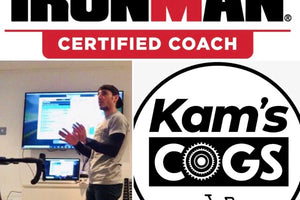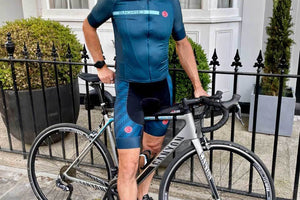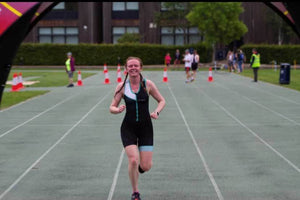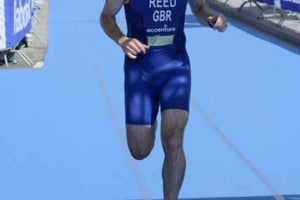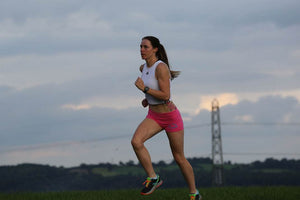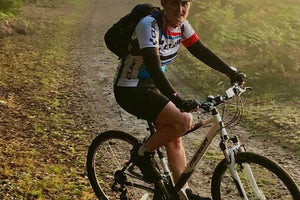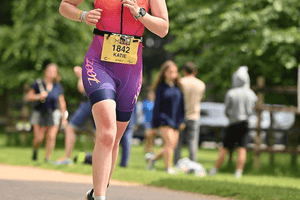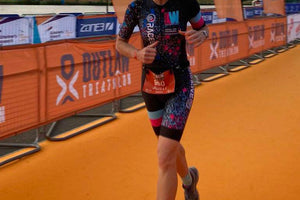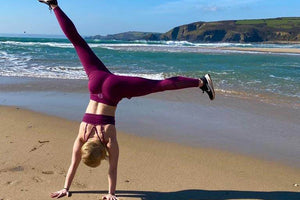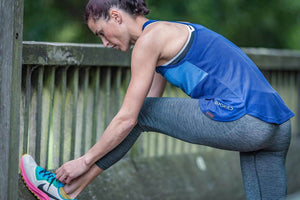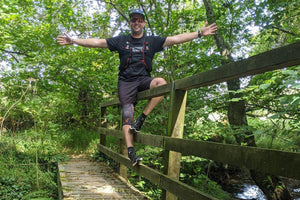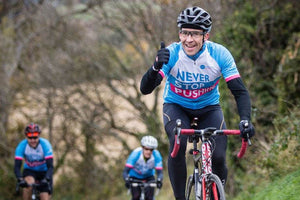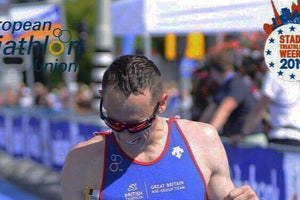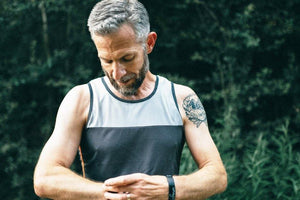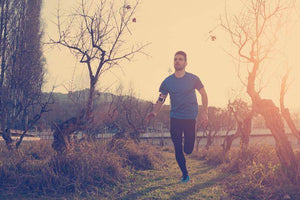
Most people who have broken a bone whilst out cycling usually have a pretty cool story to go with it to explain how it happened. Maybe they were descending a beautiful mountain in Majorca and took a turn too quickly. Or maybe they got caught up in a crash while racing. But that isn’t the case for me, and to this day I can’t fully recall exactly what happened.
All I can remember is that I was on an easy social ride on 30th December with some friends, cycling in a straight line up a very mild gradient, going fairly slowly along a dry country lane. The next thing I know, I am on my side in the middle of the road with my bike still attached – explain that one! A few people have told me that your brain can erase memories from the time of trauma, so you don’t remember how bad it was to protect yourself.
I was swiftly taken to A&E by a lovely passing van man, as the ambulance was going to be up to an hour before it could get to us. I was x-rayed and informed I had fractured and displaced my distal humerus, which required open reduction and internal fixation, and I had also damaged my shoulder and wrist. In layman's terms, I had essentially sheared off the end of my humerus, managed to flip it upwards 90 degrees which needed repositioning and reattaching with screws – lovely!

I guess in the world of cycling, this is a pretty minor injury compared to the likes of Chris Froome. But it still hurt! On my list of most painful experiences during this time, the first night following the accident is probably second – I didn't get much sleep (attempting to sleep upright with a travel pillow around my neck and my cast on my pillow), I took lots of painkillers, and just resorted to watching Netflix on my phone. Strangely, the accident itself does not take the top spot, possibly as I went into shock almost immediately. Although the journey to the hospital was pretty bad as I didn’t have any painkillers and felt every tiny bump in the road – the only downside of not being in an ambulance! The top spot is actually my first night post-surgery – I guess a lot of internal interfering made it more tender! Morphine was my friend back then that’s for sure! My first physiotherapy session is probably up there too as I almost blacked out from the pain!

As an elbow fracture is slightly more complicated than other types of fractures, I had to wait 10 days for a specialist surgeon to be available. In the meantime, I was placed in a cast and sling and Netflix became my best friend and I embarked upon a new challenge of completing One Tree Hill (one of my childhood faves) - 9 seasons with 20 episodes each – which I have recently finished as they accompanied me on my longer weekend endurance turbo sessions!

Just before surgery, they froze the nerves in my arm to act as a painkiller for when I woke up from the anaesthetic, rather than dosing me up on morphine. This meant I woke up with a completely numb arm as if I had been laid on it or something. Such a strange feeling! One thing the surgeon explained to me during my pre-op consultation was that one of the biggest potential side effects of an elbow fracture is a risk of loss of mobility if it isn’t managed effectively, due to the complicated bone structures in the elbow itself that control various movements (a lot of wrist action comes from your elbow which I never knew before!)
Because of this, post-surgery I was only given a bandage around the elbow, sling and splint for my wrist – and was told I needed to get it moving ASAP. Even so, it really did surprise me just how quickly you actually do lose strength and mobility. I only had the cast on for 10 days, and then began proper mobility and rehab work with my physio 2 weeks post-surgery. The sensation of trying to move it for the first time, not long after surgery, I can only describe as like when you have been laying on your arm in a funny position for too long resulting in a dead arm that doesn’t feel like your own and you have no control over it. I could barely lift it off a cushion on my lap and certainly couldn’t bend the elbow. The most infuriating thing was not being able to do the basics such as tie up my own hair or spread butter on my toast. Fortunately, my fantastic partner was on hand to basically be my carer until I had built up enough strength and mobility to begin doing everyday tasks with two arms again (thanks Clive!)
2 weeks post-surgery, when the pain had died down a little, I started back on the turbo trainer (one armed in a sling) with the aim of completing Tour de Zwift – great timing! For the first couple of weeks, as my body was in recovery mode, I made sure I kept the HR low to try and not negatively impact any healing. But as I was meant to be competing at the ETU age group Aquabike Championships (1.9km swim, 90km bike) in Walchsee, Austria at the end of June I was keen to not lose too much fitness (sadly due to Covid this never actually happened!) Not long after, I received confirmation that I had been accepted onto the Catenary Cycling Coaching sponsorship programme, so I was really lucky that coach Tim was going to be able to assist in getting me back to where I needed to be.
After about 2 months post-surgery, I was able to weight bear and as my elbow quite liked being at a 90 degree angle, I was able to start properly training on the turbo trainer using my TT bike with additional bubble wrap on the pads. So between now and then, with persistent physio exercises and lots of time in the garage has meant I am now almost fitter than I was pre-incident and have achieved course PBs in the first two races of the very delayed local TT championships over the last couple of weeks.
Bike fitness is one thing, but what I have found the most difficult part of returning to normal training is transitioning from the safe indoor environment where your bike is fixed to the floor pretty much, to an outdoor environment and overcoming the fear that has developed since the incident. In the early days, I was petrified at any moment that felt unsafe - speed, gravel, turns... So it was just a case of taking it easy and reminding myself of how many times I have ridden my bike with no incidents – the odds are in my favour! I am still not 100% back to my pre-incident confidence but every ride adds a little notch onto my internal gauge and so I am hopeful it will get there in time.
Running-wise, it took a little longer to get back and I wasn’t allowed to start again until 8th Feb, a month post-surgery. To begin with it was just really easy short jogs with a tubigrip supporting my elbow, with my first run back being Parkrun – I was so happy to be back running, it was an amazing feeling even if I did feel super unfit and slow! One thing that got me going was a Strava/AfterShokz 'Be Passionate' challenge - to complete 15km in 7 days. It doesn't sound like much now, but at the time this was a much needed mini challenge to keep me motivated when I felt so unfit and running was just hard work! I was 1 of the lucky 100 finishers to win a medal! About a month later I began to incorporate more fitness related work in and since then I have been slowly building back my mileage and intensity.

Currently my elbow is only a few degrees off fully straightening and bending, I am back to strength work and able to open water swim! With A races cancelled due to the current situation, I guess the silver lining for me is that is has given me the opportunity to really focus on recovery and not rush back to racing too soon which will hopefully will mean I will be even more healed and prepared for whenever we get to race again (hopefully end of October for the IM70.3 in Mallorca – fingers crossed!)
So moral of the story, wear elbow pads even when out road cycling. But on a serious note, one thing I did find to be really beneficial throughout this was to set myself mini goals to keep me focused and motivated. In the early days, this was as simple as setting myself the goal of being able to tie up my own hair over the next week, ditching my sling for everyday activities, or eating with my right hand. This then moved onto being able to do turbo sessions on the TT bike and gentle runs, to more recently ticking off the outdoor cycles to build back my confidence. They kept me on track and allowed me to see progression, even if a major goal such as competing at the Aquabike Championships felt out of reach at the time immediately after the incident. Little goals are just as important as the main one.
About the author: Helene Wright is a Team GB Age Group Multisport athlete and Sundried ambassador.



